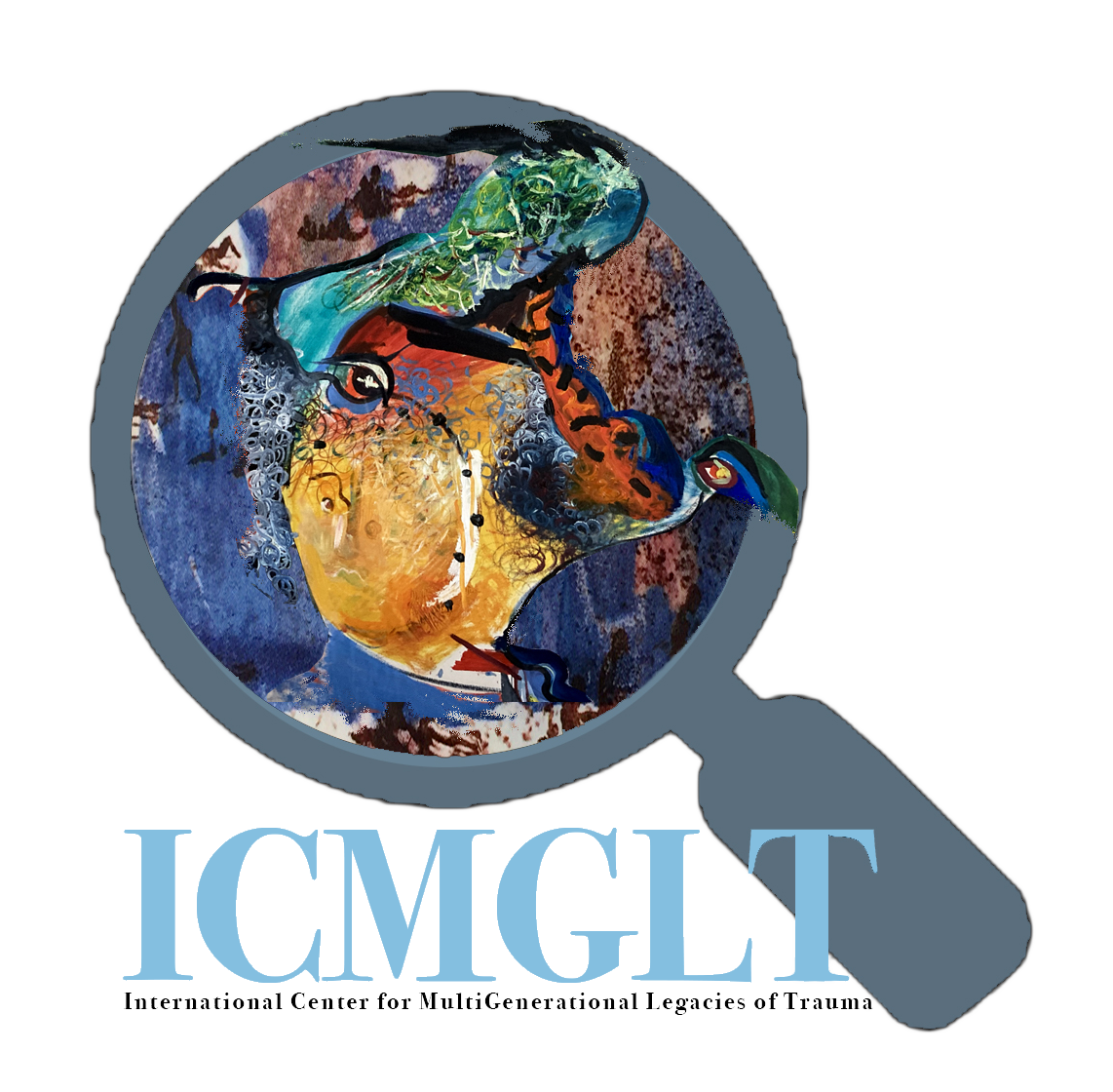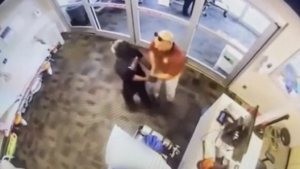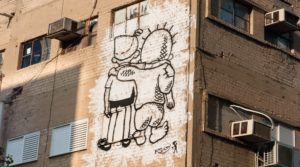“As long as the child will be trained not by love, but by fear, so long will humanity live not by justice, but by force. As long as the child will be ruled by the educator’s threat and by the father’s rod, so long will mankind be dominated by the policeman’s club, by fear of jail, and by panic of invasion by armies and navies.” — Boris Sidis, from “A lecture on the abuse of the fear instinct in early education” in Journal of Abnormal Psychology, 1919.
Child Mistreatment, Child Abuse What is it? by Alice Miller
Humiliations, spankings and beatings, slaps in the face, betrayal, sexual exploitation, derision, neglect, etc. are all forms of mistreatment, because they injure the integrity and dignity of a child, even if their consequences are not visible right away. However, as adults, most abused children will suffer, and let others suffer, from these injuries. This dynamic of violence can deform some victims into hangmen who take revenge even on whole nations and become willing executors to dictators as unutterably appalling as Hitler and other cruel leaders. Beaten children very early on assimilate the violence they endured, which they may glorify and apply later as parents, in believing that they deserved the punishment and were beaten out of love. They don’t know that the only reason for the punishments they have ( or in retrospect, had) to endure is the fact that their parents themselves endured and learned violence without being able to question it. Later, the adults, once abused children, beat their own children and often feel grateful to their parents who mistreated them when they were small and defenseless.
This is why society’s ignorance remains so immovable and parents continue to produce severe pain and destructivity – in all “good will”, in every generation. Most people tolerate this blindly because the origins of human violence in childhood have been and are still being ignored worldwide. Almost all small children are smacked during the first three years of life when they begin to walk and to touch objects which may not be touched. This happens at exactly the time when the human brain builds up its structure and should thus learn kindness, truthfulness, and love but never, never cruelty and lies. Fortunately, there are many mistreated children who find “helping witnesses”and can feel loved by them.
The United Nations Committee on the Rights of the Child
has defined corporal punishment in these words:
“any punishment in which physical force is used and intended to cause some degree of pain or discomfort, however light. Most involves hitting (“smacking”, “slapping”, “spanking”) children, with the hand or with an implement – whip, stick, belt, shoe, wooden spoon, etc. But it can also involve, for example, kicking, shaking or throwing children, scratching, pinching, biting, pulling hair or boxing ears, forcing children to stay in uncomfortable positions, burning, scalding or forced ingestion (for example, washing children’s mouths out with soap or forcing them to swallow hot spices). In the view of the Committee, corporal punishment is invariably degrading. In addition, there are other non physical forms of punishment which are also cruel and degrading and thus incompatible with the Convention. These include, for example, punishment which belittles, humiliates, denigrates, scapegoats, threatens, scares or ridicules the child.”
For some years now, there has been proof that the devastating effects of the traumatization of children take their inevitable toll on society – a fact that we are still forbidden to recognize. This knowledge concerns every single one of us and – if disseminated widely enough – should lead to fundamental changes in society; above all, to a halt in the blind escalation of violence. The following points are intended to amplify my meaning:
- All children are born to grow, to develop, to live, to love, and to articulate their needs and feelings for their self-protection.
- For their development, children need the respect and protection of adults who take them seriously, love them, and honestly help them to become oriented in the world.
- When these vital needs are frustrated and children are, instead, abused for the sake of adults’ needs by being exploited, beaten, punished, taken advantage of, manipulated, neglected, or deceived without the intervention of any witness, then their integrity will be lastingly impaired.
- The normal reactions to such injury should be anger and pain. Since children in this hurtful kind of environment are forbidden to express their anger, however, and since it would be unbearable to experience their pain all alone, they are compelled to suppress their feelings, repress all memory of the trauma, and idealize those guilty of the abuse. Later they will have no memory of what was done to them.
- Disassociated from the original cause, their feelings of anger, helplessness, despair, longing, anxiety, and pain will find expression in destructive acts against others (criminal behavior, mass murder) or against themselves (drug addiction, alcoholism, prostitution, psychic disorders, suicide).
- If these people become parents, they will then often direct acts of revenge for their mistreatment in childhood against their own children, whom they use as scapegoats. Child abuse is still sanctioned – indeed, held in high regard – in our society as long as it is defined as child-rearing. It is a tragic fact that parents beat their children in order to escape the emotions stemming from how they were treated by their own parents.
- If mistreated children are not to become criminals or mentally ill, it is essential that at least once in their life they come in contact with a person who knows without any doubt that the environment, not the helpless, battered child, is at fault. In this regard, knowledge or ignorance on the part of society can be instrumental in either saving or destroying a life. Here lies the great opportunity for relatives, social workers, therapists, teachers, doctors, psychiatrists, officials, and nurses to support the child and to believe her or him.
- Till now, society has protected the adult and blamed the victim. It has been abetted in its blindness by theories, still in keeping with the pedagogical principles of our great-grandparents, according to which children are viewed as crafty creatures, dominated by wicked drives, who invent stories and attack their innocent parents or desire them sexually. In reality, children tend to blame themselves for their parents’ cruelty and to absolve the parents, whom they invariably love, of all responsibility.
- For some years now, it has been possible to prove, through new therapeutic methods, that repressed traumatic experiences of childhood are stored up in the body and, though unconscious, exert an influence even in adulthood. In addition, electronic testing of the fetus has revealed a fact previously unknown to most adults-that a child responds to and learns both tenderness and cruelty from the very beginning.
- In the light of this new knowledge, even the most absurd behavior reveals its formerly hidden logic once the traumatic experiences of childhood need no longer remain shrouded in darkness.
- Our sensitization to the cruelty with which children are treated, until now commonly denied, and to the consequences of such treatment will as a matter of course bring to an end the perpetuation of violence from generation to generation.
- People whose integrity has not been damaged in childhood, who were protected, respected, and treated with honesty by their parents, will be – both in their youth and in adulthood – intelligent, responsive, empathic, and highly sensitive. They will take pleasure in life and will not feel any need to kill or even hurt others or themselves. They will use their power to defend themselves, not to attack others. They will not be able to do otherwise than respect and protect those weaker than themselves, including their children, because this is what they have learned from their own experience, and because it is this knowledge (and not the experience of cruelty) that has been stored up inside them from the beginning. It will be inconceivable to such people that earlier generations had to build up a gigantic war industry in order to feel comfortable and safe in this world. Since it will not be their unconscious drive in life to ward off intimidation experienced at a very early age, they will be able to deal with attempts at intimidation in their adult life more rationally and more creatively.
Excerpts from: Corporal Punishment & Political Missions by Alice Miller
Under certain circumstances, children who have been told repeatedly that the humiliations and beatings they have been subjected to are for their own good may end up believing it all their lives. Consequently, they will raise their own children in the same way, laboring under the delusion that they are doing the right thing. But what happens to all the rage, the pain, the anger those children were forced to suppress when they were not only treated cruelly by their own parents but expected to be grateful for it?
Tackling this question has helped me get nearer to answering the first of the questions I asked about childhood: How does evil come into the world? Gradually, the conviction took shape in my mind that evil is reproduced with each new generation. Newborn infants are innocent. Whatever predispositions they may have, they feel no urge or need to destroy life. They want to be looked after and protected, to love and be loved. If those needs are not satisfied, if children are abused instead of cherished, then that will determine the entire course of their lives. Human beings feel the urge to be destructive only if they were subjected to cruelty at the beginning of their own lives. A child who has been loved and respected will have no motivation to wage war on others. Evil is not an inevitable or integral part of human nature.

From a close study of many biographies, I established that in those cases where the victim did not turn into a victimizer, there was invariably some figure that had shown the child affection, the person I call the helping witness. Children with helping witnesses to turn to were able to gain awareness of the evil that had been done to them while at the same time identifying with the person who had shown them kindness. The Russian novelist Fyodor Dostoyevsky is one well-known example. Though he probably suffered at the hands of his brutal father, he was given solace by his loving mother.
Children with no helping witness are in the greatest danger of regarding the dreadful things they have been subjected to as for their own good and then dealing out to others the same kind of treatment without the slightest pangs of conscience. In short, they will ideologize this hypocrisy. Hitler the child learned at home that blows and humiliations were right and proper. Hitler the adult insisted — and believed — that it was his calling to save Germany by exterminating the Jews. Other dictators have ideologized their acts of vengeance in similar ways. Stalin had to purge Russia of the subversive “cosmopolitans”; Napoleon had to establish the Grande Nation, cost what it might; Milosevic had to make Serbia into a great nation.
Society’s blindness to these mechanisms is what still makes wars possible, because the actual reasons behind them remain in the dark. Although probably all historians, at least in Germany, know very well that Frederick the Great was humiliated and tormented by his father, I have yet to come across a historical work that makes the connection between the cruelty meted out to this sensitive child and the monarch’s later compulsive urge to overthrow as many countries as he could. Obviously this subject is still taboo.
For as long as we have recorded memory, the same woeful picture has been repeating itself. Men go off to war, women cheer them as they leave, and very few question what really sparked it off. Wars patently designed to invade and conquer foreign territory are passed off as acts of self-defense, or as the fulfillment of some holy mission. Most people are blind to the genuine reasons behind these “missions.” Only when we have understood where evil comes from and how we keep it alive in our children will we cease to be helplessly exposed to its effects. We have a long way to go.
In nearly half of the fifty states in the United States, teachers are still allowed to spank children in school. This punishment is given for minor offenses, usually in the form of paddling on the buttocks performed by a person specially designated to do so. There is a graded scale of different forms of corporal punishment aimed at meting out “discipline.” Pupils are made to stand in a corridor awaiting their turn to be chastised. These children appear to consider this institutionalized humiliation as something normal. Only later will their pent-up feelings of rage be vented in acts of criminal aggression. Most parents tolerate this system; some actively endorse it. Isolated mothers and fathers who oppose it are more or less doomed to ineffectuality. In Texas alone, according to the Project NoSpank Web site, some 118,000 children are punished this way each year.
But beaten children are not learning how to defend themselves against criminals. They are learning to fear their parents, to play down their own pain, and to feel guilty. Being subjected to physical attacks that they are unable to fend off merely instills in children a gut feeling that they do not deserve protection or respect. This perniciously false message is stored in their bodies and will influence their view of the world and their attitude toward their own children.
They will be unable to defend their claim to human dignity, unable to recognize physical pain as a danger signal and act accordingly. Their immune systems may even be affected. In the absence of other persons on whom to model their behavior, these children will see the language of violence and hypocrisy as the only effective means of communication. Naturally, they will avail themselves of that language when they grow up because adults normally suppress feelings of powerlessness and helplessness. This is the real reason why so many defend the old system of parenting and schooling. Until now only 17 of 192 members of the United Nations Organization had made spanking children illegal. This shows how little this problem is recognized world-wide.
The earlier the use of violence starts, the more profoundly the lesson is internalized and the less accessible it is to later control by the conscious mind. Thus, the first opportunity, in the form of some kind of political ideology, will suffice to spark off bestial cruelty in quiet, servile people who were living with explosive suppressed aggression.
For those acts of vengeance, society provides a whole range of ideological guises. Racism, anti-Semitism, fundamentalist fanaticism, and “ethnic cleansing” are only some of them. Many young people engaged in such activities strongly believe that they are serving idealistic aims.
Related Articles & Books:
Breaking Their Will: Shedding Light on Religious Child Maltreatment by Janet Heimlich
This revealing, disturbing, and thoroughly researched book exposes a dark side of faith that most Americans do not know exists or have ignored for a long time—religious child maltreatment. After speaking with dozens of victims, perpetrators, and experts, and reviewing a myriad of court cases and studies, the author explains how religious child maltreatment happens. She then takes an in-depth look at the many forms of child maltreatment found in religious contexts, including biblically-prescribed corporal punishment and beliefs about the necessity of “breaking the wills” of children; scaring kids into faith and other types of emotional maltreatment such as spurning, isolating, and withholding love; pedophilic abuse by religious authorities and the failure of religious organizations to support the victims and punish the perpetrators; and religiously-motivated medical neglect in cases of serious health problems. In a concluding chapter, Heimlich raises questions about children’s rights and proposes changes in societal attitudes and improved legislation to protect children from harm.
Children as Chattel: The Common Root of Child Abuse and the Pro-Life Movement by Valerie Tarico
Confronting Religion & Child Abuse by Valerie Tarico
Does The Bible Sanction Child Abuse by Valerie Tarico
In Some Countries, It’s Illegal To Hit Your Child. The U.S. Is Not One Of Them
Mistreatment & Child Abuse by Alice Miller
Smacking Children Does Harm Says Consultant
Ten Reasons Not to Hit Your Child
You Can’t ‘Unhit’ Your Child: Anxiety and Corporal Punishment




